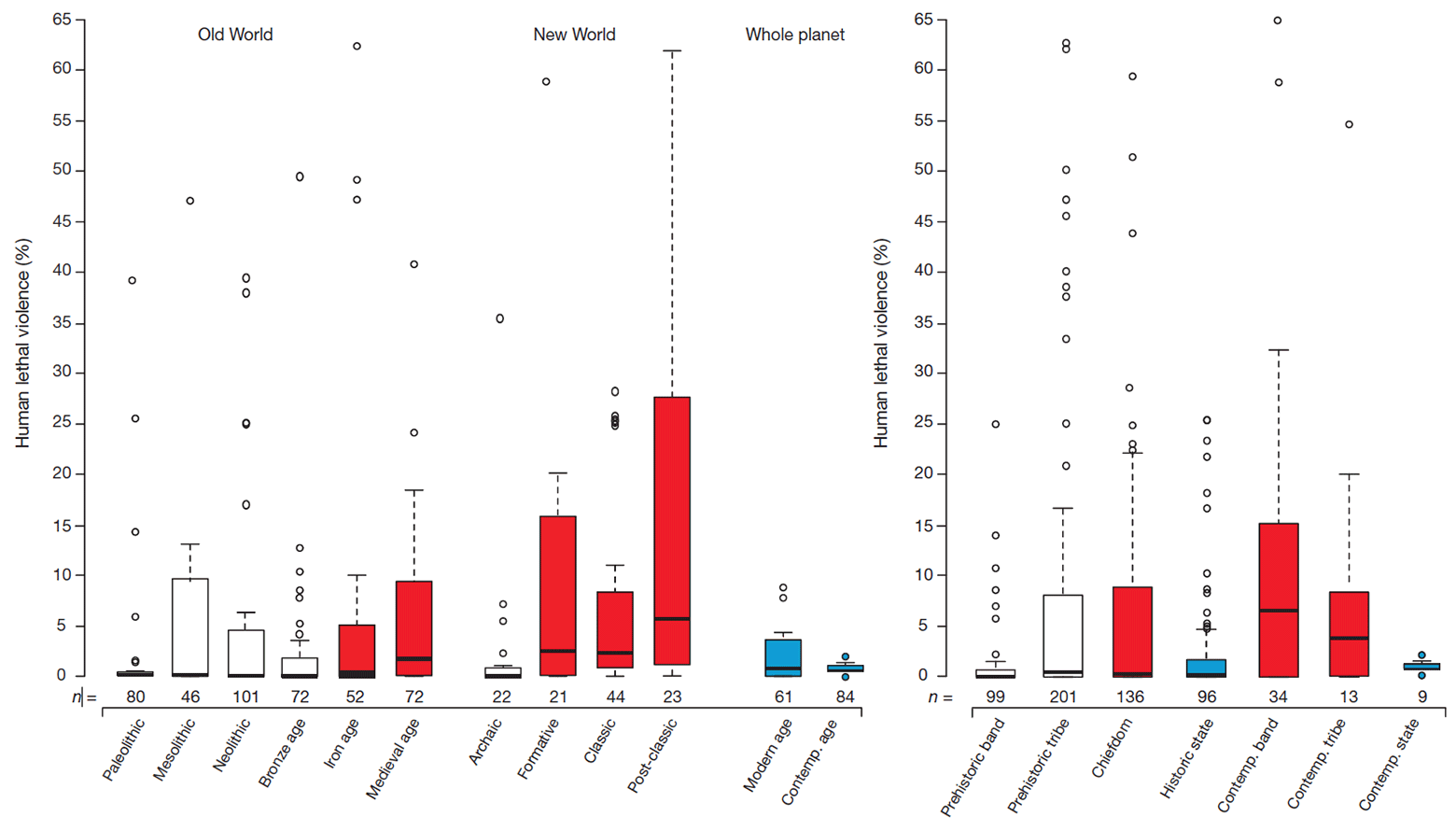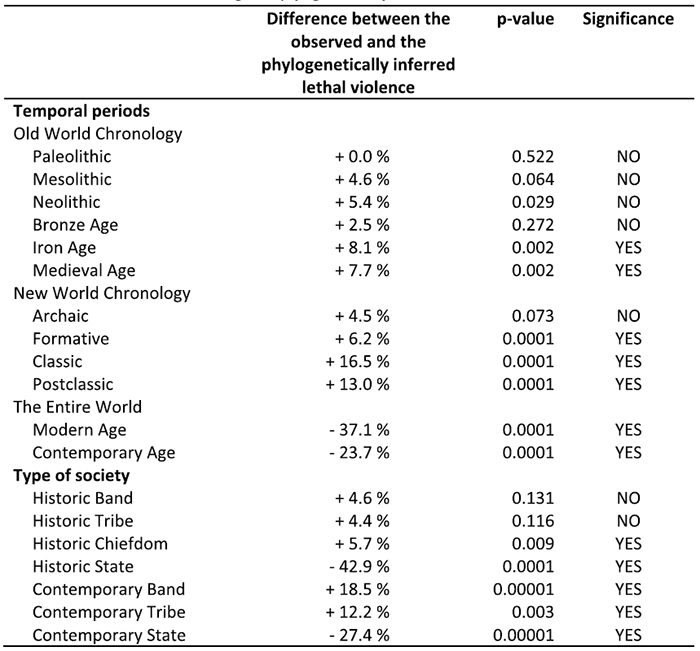Killing kinsmen - outdated evolutionary strategy

Meerkats are the most dangerous mammals on Earth. The level of intraspecific violence in meerkats is 19.8%, that is, every fifth death occurs from the paws of relatives.
Disputes about the nature of human violence have not ceased since the publication of the treatise Leviathan by Thomas Hobbes in 1651, which was once banned in England. According to the philosopher, the war of all against all was the natural state of society before the conclusion of the social contract and the formation of the state. Its citizens gave a monopoly on violence and the right to legally kill people (the death penalty for criminals, the conduct of hostilities, etc.). According to the gloomy beliefs of Hobbes, each person acts out of purely egoistic principles. Relationships of people are allegedly characterized by the phrase " man is man-wolf ."
According to some scientists, the killing of people by each other is a purely cultural phenomenon. Others believe that this is a genetic trait that is inherited and is present not only in humans, but also in other mammals. In any case, it seems that the propensity for deadly violence has arisen in humans as a result of evolution.
In this sense, the killing of congeners can be considered as an adaptive evolutionary strategy that increases the reproductive success of males in the fight for females, status or resources. Of course, this does not mean that such a strategy is suitable for all situations. As numerous studies have shown, the success of this evolutionary strategy depends largely on the ecological and cultural context, so the level of violence varies greatly in different epochs of human development and in different cultures.
')
Thus, the killing of relatives is a rather complex phenomenon, which has developed as a result of a combination of environmental, social, cultural and genetic factors.
This phenomenon is not unique to humans. Many primates exhibit a high level of intergroup aggression, including infanticide (used as a way to survive from the group of one of the older members). Even seemingly harmless mammals, such as horses and hamsters, sometimes kill their own kind.
In connection with the widespread killing of congeners among different mammals, the question arises as to what place humans occupy among them. Scientists from the University of Granada (Spain) investigated this topic and composed a phylogenetic tree of 1024 mammals belonging to 137 families, as well as more than 600 human societies, starting with the Paleolithic. For each of the elements of the tree, the level of mortal violence was calculated, which is defined as the probability of dying by the relative's hand (paw), compared to the probability of dying from another cause. Thus, the level of deadly violence is defined as a relative value in percent. Statistics on infanticide, cannibalism, intergroup aggression and many other types of homicides within one species of animals are collected from all available sources. For people, mortality statistics were taken into account in wars, premeditated murders, executions, infanticide and other types of intentional killings.
According to the results of the analysis, it turned out that the lethal aggression is present in varying degrees in almost 40% of the animals studied. This is almost certainly an underestimate, because not all types of information are available. In general, taking into account the species without recorded killings, the mortality rate from the lethal violence of congeners is 0.30 ± 0.19% of the total number of deaths. In general, violence is widespread among mammals, although it is rare (that is, it is a rare cause of death).

The evolution of deadly violence in animals (except humans). The level of aggression corresponds to the intensity of the color from yellow to dark red. Light gray means no lethal aggression. The ancestors of the people are marked in red. The red triangle corresponds to the phylogenetic position of a reasonable person.
Champions among mammals in the killing of congeners turned out to be meerkats (level of violence 19.36%), red-tailed monkeys (18.18%), blue monkeys (17.7%) and red-tailed lemurs (16.67%).
Next, scientists have tried to establish whether the killing of relatives is an evolutionary strategy. For this, they hypothesized that the level of violence would correlate with the phylogenetic signal, that is, the proximity of animals to each other on the tree of evolution. So it happened. For example, intraspecific killing is almost absent in certain branches of the evolution of mammals, such as bats, whales and hares, but is ubiquitous in primates. Within the primate squad, the level of violence varies greatly between chimpanzees and bonobos, which indicates a certain evolutionary flexibility of the strategy. It probably also depends on some external factors, such as ecology (habitat) and sociality.
Organized killing of a kinsman by a chimpanzee group
Scientists carried out the sorting of animals by habitat and sociality - and found that the level of deadly aggression in territorial animals is higher than in others, and in social animals higher than in those leading a solitary lifestyle.

The level of violence also varied greatly in the evolution of human ancestors. At distant nodes on the evolutionary tree, it is extremely low, but gradually grew to a maximum of 2.3 ± 0.1% for two nodes directly related to the origin of primates. Then decreased to 1.8 ± 0.1% in apes (hominids). All this points to the evolutionary nature of the phenomenon.

Homo Sapiens demonstrated a record level of violence in the Middle Ages, and in modern times the level of violence among people has decreased almost to the peace-loving Paleolithic era.

According to the calculations of scientists, in the classical and post-classical era, the number of murders was 13-16% higher than the target, that is, higher than the phylogenetically calculated index.

Special cruelty manifests itself in societies such as nomadic bands. Population density is a natural environmental driver for violence, say scientists, but not the determining factor. Thus, in human society, the level of violence was higher at a time when the population density was lower than now.
Scientists believe that the power of mankind generally eliminate the killing of relatives as an evolutionary factor. This is an archaism that needs to be experienced. “From our point of view, the main message of our research is that no matter how cruel our ancestors were, we can reduce the level of violence by changing the social environment,” said one of the authors of the study, José María Gómez of the University of Granada (Spain). “We are able to build a more pacifist society if we want.” In fact, this evolutionary strategy is already outdated. As the tailbone, fangs and hair on the human body, we inherited it from our ancestors as an unnecessary rudiment of the animal age.
The scientific article was published on September 28, 2016 in the journal Nature (doi: 10.1038 / nature19758).
Source: https://habr.com/ru/post/398321/
All Articles